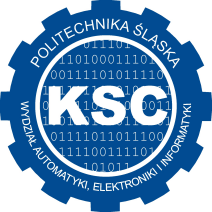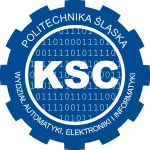Programowalne systemy sterowania, ze szczególnym uwzględnieniem konstrukcji wielordzeniowych jednostek centralnych sterowników programowalnych oraz odwzorowania algorytmów sterowania w sprzęcie (FPGA). W obszarze konstrukcji wielordzeniowych jednostek centralnych, prowadzone są prace nad współbieżną pracą procesorów bitowo-bajtowych, generacją strumienia instrukcji programu sterowania opisanego zgodnie z normą IEC 61131-3, dekompozycją programu sterowania dla wielordzeniowych i zdarzeniowych jednostek sterujących, sprzętowym wspomaganiem obliczeń, sprzętowo wspomaganą zdarzeniową realizacją programu oraz rozproszonymi systemami sterowania. W zakresie odwzorowania sprzętowego programów sterowania prace koncentrują się na: algorytmicznym tworzeniu struktury sprzętowej realizującej program sterowania opisany zgodnie z normą IEC 61131-3, metodach reprezentacji pośredniej programu sterowania i jego optymalizacji dla potrzeb odwzorowania technologicznego w strukturach FPGA, syntezie logicznej wysokiego poziomu, ze szczególnym uwzględnieniem tworzenia harmonogramu operacji oraz dekompozycji programu sterowania dla systemu rozproszonego.
Komputerowo wspomagana, automatyczna synteza układów cyfrowych ze szczególnym uwzględnieniem problemów efektywnego odwzorowania projektowanych układów w strukturach programowalnych (CPLD, FPGA) z wykorzystaniem języków opisu sprzętu. Obiektem zainteresowań są zarówno układy kombinacyjne, jak i automaty sekwencyjne: synchroniczne i asynchroniczne. Główne prace naukowo-badawcze prowadzone w obszarze syntezy logicznej obejmują: problemy dekompozycji, sposoby efektywnego opisu układów cyfrowych w językach opisu sprzętu (Verilog, VHDL), sposoby reprezentacji funkcji logicznych (BDD, grafy wyjść), zagadnienia odwzorowania technologicznego (ang. technology mapping), optymalizację układów (minimalizacja powierzchni, maksymalizacja częstotliwości pracy, minimalizacja poboru mocy) oraz problemy realizacji układów w postaci struktury GALS (Globally Asynchronous Locally Synchronous).
Cyfrowe metody zwielokrotniania częstotliwości i liczby impulsów, funkcje prostokątne i ich zastosowania w syntezie logicznej, metody syntezy logicznej w dziedzinie spektralnej Walsha, Reeda-Mullera i Haara, formy arytmetyczne funkcji logicznych – zastosowanie wielomianów arytmetycznych do reprezentacji funkcji logicznych, boolowski rachunek różniczkowy w technice cyfrowej.
Testowanie i diagnostyka systemów cyfrowych: testowanie i diagnostyka połączeń w systemach cyfrowych, struktury wbudowanego samotestowania i testowania współbieżnego, generatory sekwencji testowych oraz analizatory odpowiedzi testowych, projektowanie specyficznych rejestrów liniowych, projektowanie ułatwiające testowanie, projektowanie systemów cyfrowych zgodnych ze standardami IEEE 1149 oraz IEEE 1500.
Projektowanie ASIC: metodologia projektowania na wysokim poziomie abstrakcji, modelowanie i symulacja systemów z użyciem języków VHDL i Verilog, projektowanie modułów IP-core, metodologia projektowania rozproszonego opartego o Internet, wirtualne organizacje.
Systemy wieloprocesorowe: systemy ze wspólną pamięcią, analiza wydajności takich systemów z wykorzystaniem teorii kolejek, konstrukcja różnych układów arbitrażu i ich wpływ na wydajność systemów wieloprocesorowych.
Projektowanie systemów wnioskowania przybliżonego: optymalizacja architektury systemów regułowych i relacyjnych, programowa i sprzętowa implementacja systemów w układach programowalnych oraz systemach wbudowanych, projektowanie dedykowanych sterowników programowalnych wykorzystujących logikę rozmytą, aplikacje systemów wnioskowania przybliżonego.
Systemy cybernetyczno-fizyczne a w szczególności systemy cybernetyczno fizyczne w medycynie, telemedycyna.
Wektorowe układy sterowania silnikami z magnesami trwałymi PMSM. Wyznaczanie charakterystyk mechanicznych silników. Wykorzystanie procesorów sygnałowych DSP do obliczeń wektorowych. Pomiar mocy i sprawności zarówno samych silników jak i całych układów napędowych.









